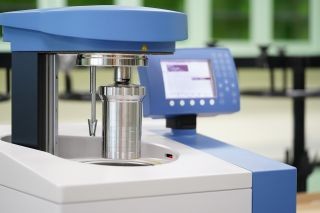Calories are a key metric for those monitoring their weight and overall energy intake. But what exactly is a calorie, and how do food scientists determine the caloric content of the food we consume? This article explores the science behind calorie calculation and its importance.
Understanding Calories: Energy Units
A calorie is a unit of energy, not a measure of weight or nutrient density. Confusingly, the “calories” listed on nutrition labels are actually kilocalories (kcals). According to the National Health Service (NHS) U.K., food packaging uses the term “calories” while referring to kcals. One kcal represents the amount of energy needed to raise the temperature of 1 kilogram (2.2 lbs) of water by 1 degree Celsius (1.8 degrees Fahrenheit), explains Grace Derocha, a registered dietitian and health coach at Blue Cross Blue Shield of Michigan. Calories in food originate from the three macronutrients: fat, carbohydrates, and protein.
Measuring Calories: The Bomb Calorimeter
The Nutritional Labeling and Education Act, passed in 1990, mandates standardized nutritional information on food labels, including calorie counts. Food scientists use tools like the bomb calorimeter to determine the caloric content of packaged foods. The bomb calorimeter directly measures the energy in food, according to Ruth MacDonald, professor and chair of food science and human nutrition at Iowa State University. In this method, the food is placed in a sealed container surrounded by water, then heated until it’s completely burned. The rise in water temperature reveals the food’s calorie content.
However, the bomb calorimeter isn’t the only method. Scientists also rely on a calculation developed by Wilbur Atwater, a 19th-century U.S. chemist, to indirectly estimate calories in food.
The 4-9-4 System: Atwater’s Contribution
Atwater’s 4-9-4 system accounts for the fact that humans lose calories through heat, urine, and feces, which calorimeters don’t measure. Atwater calculated the calories in various foods and analyzed excrement to determine calorie loss. His research revealed that proteins and carbohydrates each contain approximately 4 calories per gram (0.04 ounces), while fats contain 9 calories per gram. This is the foundation of the 4-9-4 system. Alcohol was found to have 7 calories per gram.
MacDonald provides an example: “A food containing 10 grams (0.35 ounces) of protein (10 x 4 = 40) and 5 grams (0.2 ounces) of fat (5 x 9 = 45) has a total caloric value of 40 + 45 = 85 calories.”
Despite modernization of Atwater’s calculation, some experts deem it outdated and inaccurate. A 2012 study in the American Journal of Clinical Nutrition found that the Atwater system inaccurately calculates the energy content of certain foods like nuts. The FDA also allows a 20% margin of error for nutrients, including calories, listed on food labels, further questioning the accuracy of these counts.
Macdonald adds that even with zero margin of error, “[this method] does not take into account the digestive process but assumes complete conversion of nutrients to energy. That doesn’t happen in humans, although our bodies are pretty efficient at recovering energy from food.” The calorie count on packaged foods is likely calculated using the Atwater system, although this may change in the future.
Why Calorie Counting Matters
Calorie data on food packaging allows individuals to monitor their intake and prevent overconsumption, according to the NHS. Foods like protein and fat promote satiety faster than carbohydrates. This can result in lower calorie consumption on a protein-rich diet compared to a carbohydrate-rich diet, even with similar feelings of fullness. By quantifying the energy in food, consumers gain awareness of their energy intake.
Estimating Exercise Calories
Exercise monitoring devices, like treadmills and fitness trackers, provide real-time data on calories burned during exercise. These devices estimate calories burned solely due to physical exertion, not the total calories burned by the body during that period. These estimates are based on algorithms incorporating personal information like age, gender, height, and weight, according to a 2018 article in the Journal of Parallel and Distributed Computing.
This data allows smart devices to estimate a person’s Basal Metabolic Rate (BMR), which is the energy the body expends at rest while performing essential biological functions, as defined by the Encyclopedia of Animal Cognition and Behaviour.
In conclusion, understanding how calories are calculated and their role in our diet allows us to make more informed choices about our food consumption and overall health.
